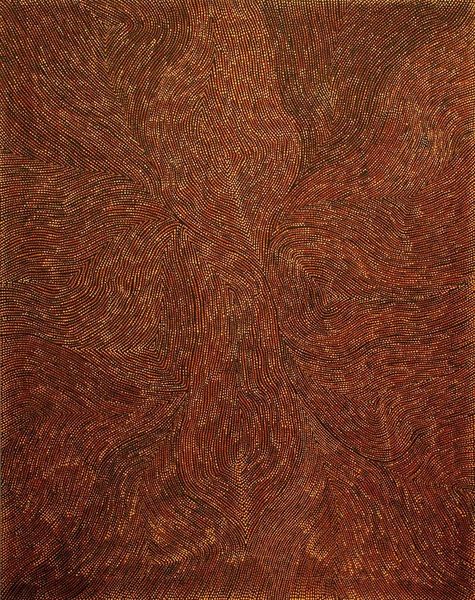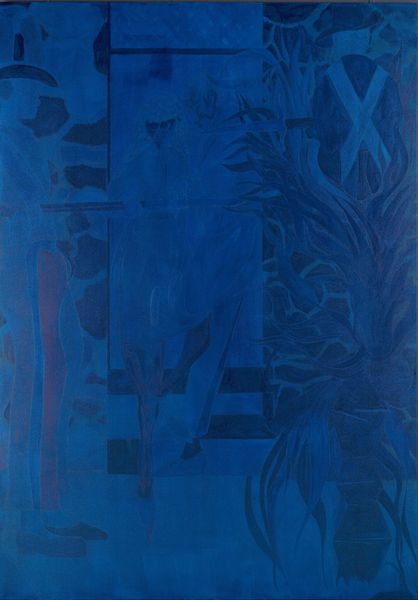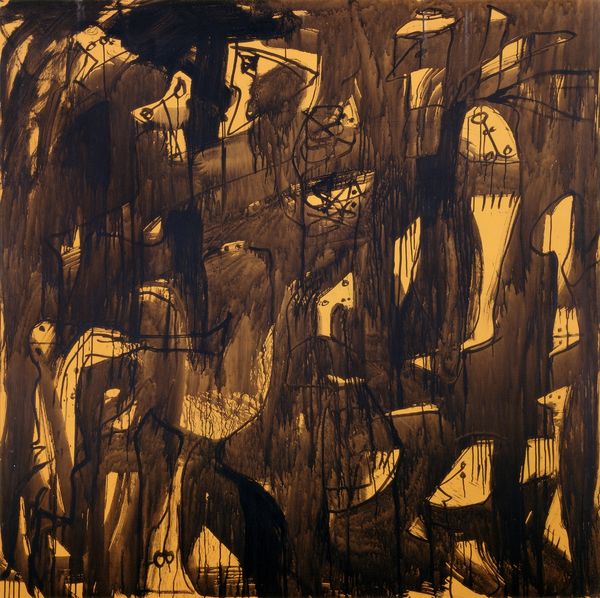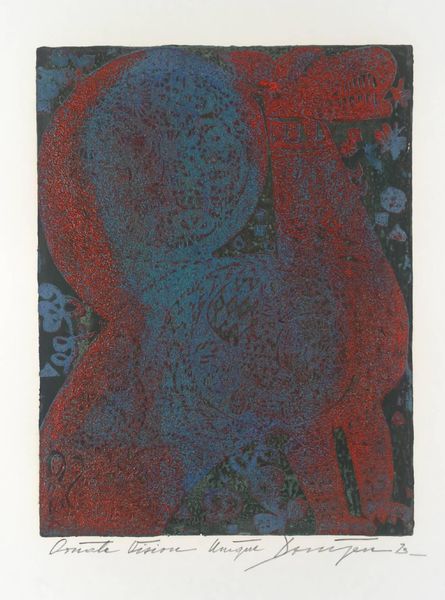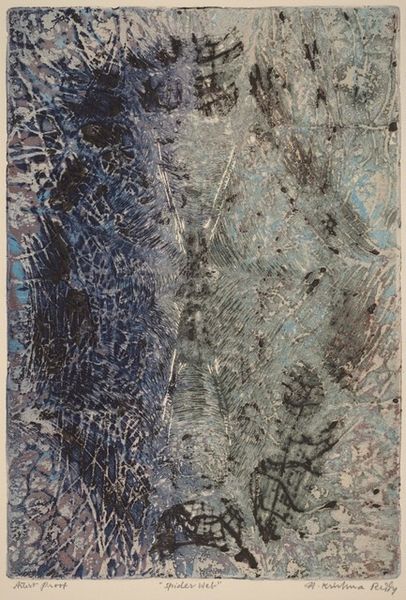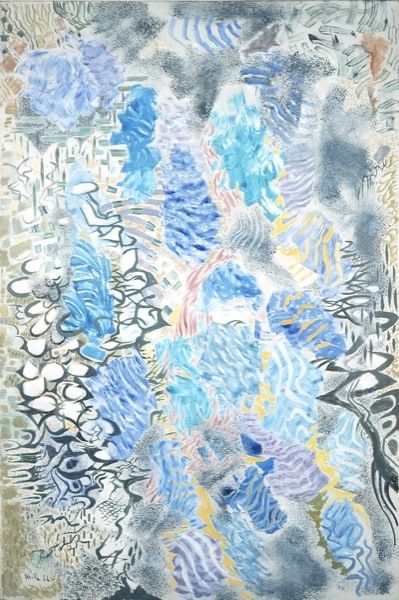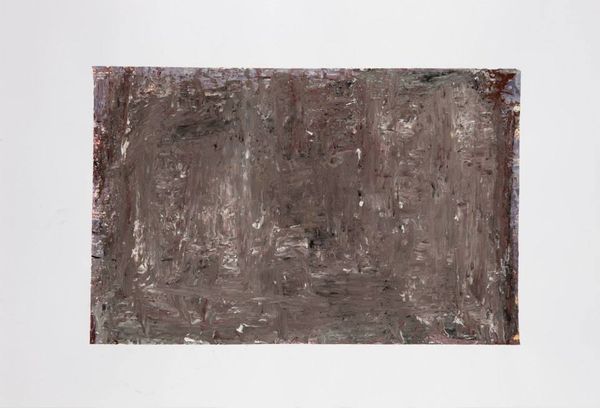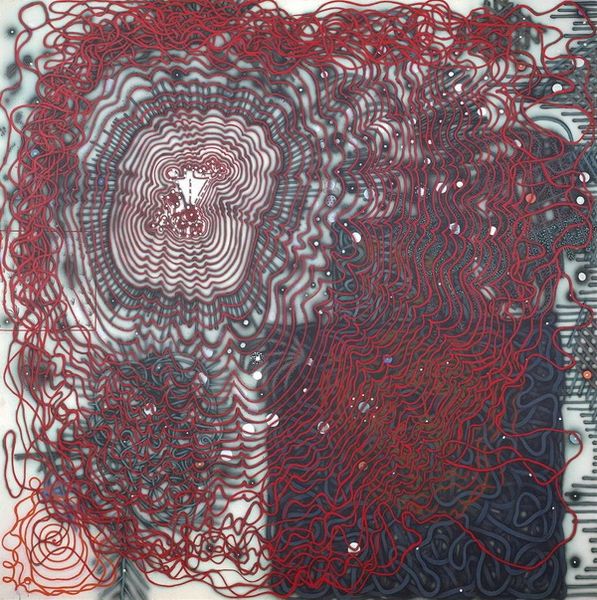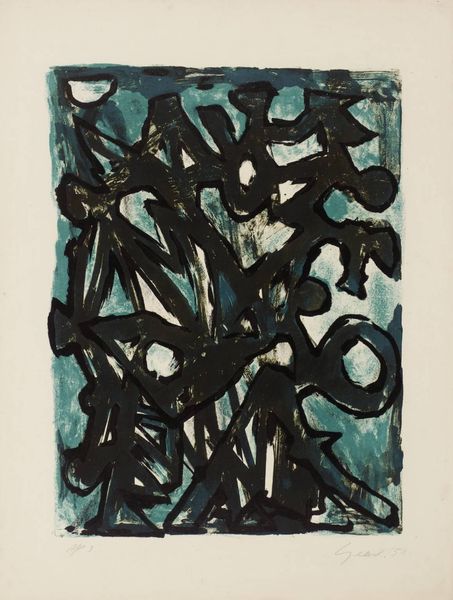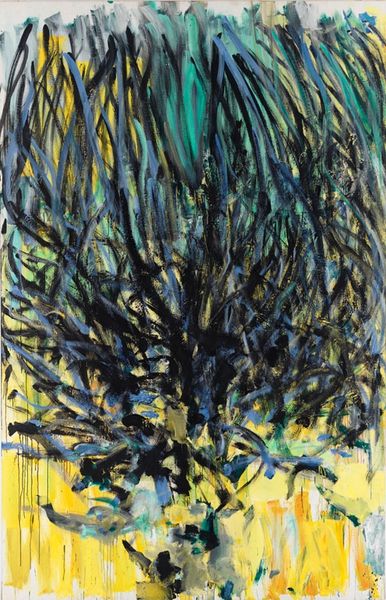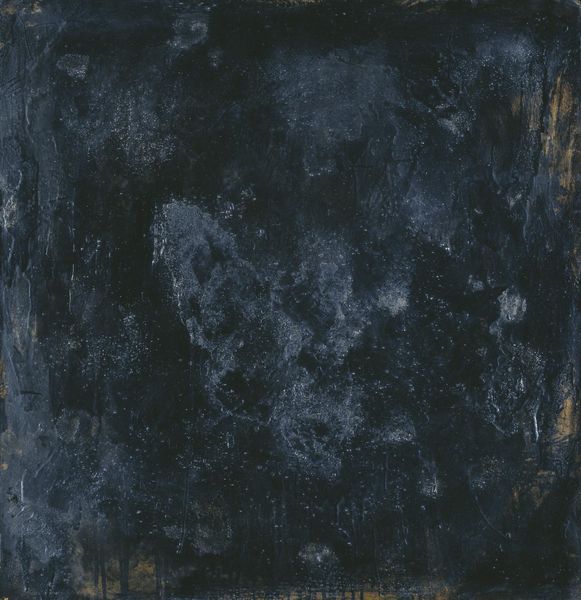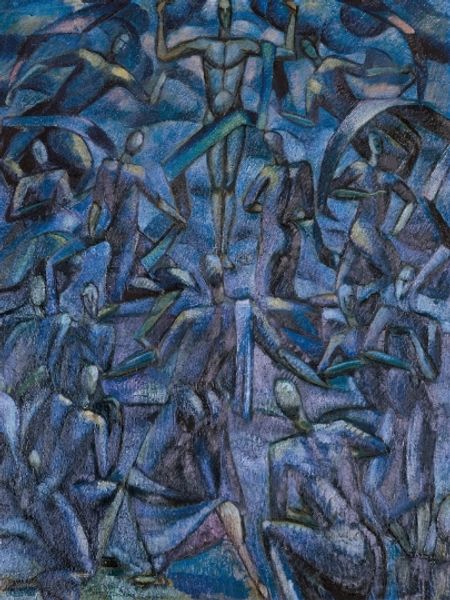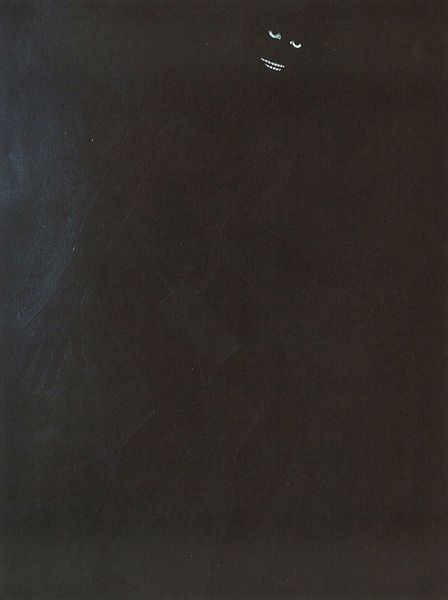
Dimensions: support: 508 x 470 mm frame: 725 x 682 x 72 mm
Copyright: CC-BY-NC-ND 4.0 DEED, Photo: Tate
Curator: Paul Klee's "Walpurgis Night," currently held in the Tate Collections, immediately strikes me as a rather haunting composition. Editor: Indeed. The monochromatic palette, that brooding blue, sets a somber, almost unsettling tone. It makes me wonder about the materials Klee used. Was this a deliberate choice to evoke a sense of darkness? Curator: It very well could be. Given Klee's interests, I'd surmise he selected materials that could express the undercurrents of social anxiety, the burgeoning unease in pre-war Europe. Editor: But consider the lines, how they vibrate across the surface. It's not just about content, but the aesthetic relationship between these expressive marks and the viewer. This, in my view, creates a compelling visual rhythm. Curator: Perhaps, but I believe it’s impossible to look at this piece without acknowledging the historical context. The rise of industrialization, the impact of labor on the human psyche—Klee was deeply affected by these changes. Editor: Ultimately, the dense layering draws me in. I leave appreciating not just the subject matter but the formal dynamism of the piece. Curator: Yes, it's a stark reflection on the world he inhabited and a reminder that art doesn't exist in a vacuum.
Comments
Join the conversation
Join millions of artists and users on Artera today and experience the ultimate creative platform.
tate 6 months ago
⋮
During the rise of the Nazi regime in the Thirties, Klee became a target of their campaign against ‘degenerate art’. In 1933 Klee was stripped of his teaching post at the Bauhaus and fled to Switzerland where he fell ill, produced far fewer paintings, and died in 1940. More than a hundred of his works were confiscated from German museums and collections. Walpurgis Night is the night that marks the transition from winter to spring, falling on the eve of the first of May. In folk tradition, witches would gather on the Brocken, the highest of the Harz Mountains, to perform rituals to ward off evil. According to his son Felix, such legends exerted a particularly strong influence on Klee’s work. Gallery label, August 2011
